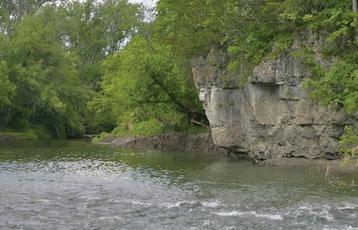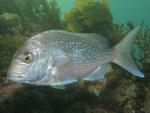ZINC TRENDS IN AUCKLAND WATERWAYS

IS ZINC SOURCE CONTROL FOR ROOFING JUSTIFIED?
Last year we advised that the Proposed Auckland Unitary Plan (PAUP) 2013 contained provisions not allowing the use of unpainted metal roof (or wall) cladding other than aluminium. We commented on the implications of this in Scope Issue 35 in May 2014.
Now that the first hearings for this issue (Topics 046 and 049) have been held, and we now have to wait until 2016 to discover the outcome, some thoughts on the validity of these provisions:-
Auckland Council’s Position on Source Control for Roofing
Zinc in stormwater has been identified by Auckland Council as a priority contaminant of concern for Auckland harbours, estuaries and streams, evident in the source control measures specified in the Proposed Auckland Unitary Plan (PAUP). The PAUP restricts the installation of “high contaminant-yielding roofing, spouting, cladding material or architectural features” product to not exceed:
1) 25m2 in urban environments, or rural environments where run off is piped directly to a watercourse; and
2) 250m2 in rural environments where run-off is directed to vegetated drain/swale, wetland or similar. For roofing and cladding areas larger than the 25m2 (urban, roughly the size of a carport) or 250m2 (rural, roughly the size of a house), this becomes a controlled activity and the stormwater must be discharged through devices that will limit the concentration of total zinc to <30.0µg/l.
Auckland Council does not identify any environmental effects justifying the 30.0µg/l zinc target. The figure is derived from a median value performance of a range of best management practice zinc reduction approaches (Auckland Council, 2013) and has not been linked to any data relating to environmental effects. Council bases its concerns on observations of temporal trends in contaminant concentrations for marine sediment, with Council claiming that some sites have shown increasing zinc levels.
What does the data tell us about zinc trends in Auckland waterways?
A more recent study identifies serious concerns with the reliability of Council’s zinc trend claims (Shedden, 2014)*. In his study, Dr. Shedden reviewed Council’s own monitoring data (derived from a range of sources including National Institute of Water and Atmospheric Research Ltd and Diffuse Sources Ltd) and concluded that “where statistically significant trends occur for zinc levels in streams, estuaries and harbours, they are mostly observed to be reducing”. He found that zinc levels in the vast majority of marine sediment sites have not changed significantly during the monitoring period. In addition, his analysis of temporal trends for zinc in freshwater streams revealed that no sites are experiencing increasing levels of zinc. Dr. Shedden confirmed that freshwater streams, in particular, were consistently observed to have declining levels of zinc over the last two decades of monitoring, with almost half the monitoring stations showing significant decreasing trends between 1995 and 2013.
Dr. Shedden’s findings are consistent with comprehensive stormwater contaminant modelling of the Upper Waitemata Harbour and South-eastern Manukau Harbour, which predicted a decreasing trend in zinc loads between 2001 and 2015-20 as existing galvanised roofs are replaced by zinc aluminium coated steel, followed by a slow increase as vehicles become the dominant source of zinc (Timperley and Reed, 2008).
The New Zealand roof and wall cladding market has been almost completely converted from heavy usage of galvanised steel following the introduction of zinc aluminium coated steel to New Zealand in 1994. As such, Shedden et al, 2007 predicted that the net zinc load from steel roofing in the urban Auckland region would be reduced by 95% for modern steel roofing (unpainted and prepainted zinc aluminium coated steel) compared with past usage of galvanised steel. From a national perspective, the Parliamentary Commissioner for the Environment (2012) has stated that heavy metal pollution is largely a legacy issue arising from old industry practices, and from a scientific perspective, the three key water quality contaminant issues for New Zealand are actually pathogens, sediments and nutrients. Consequently, instituting zinc source control for roofing is not justified as it would have no significant impact on environmental health. We note that nowhere in the PAUP relating to stormwater quality does there seem to be any reference to pathogens (i.e. sewage).
Worth reading, but technical (paste into your browser)
*https://12240 console.memberconnex.com/Folder? Action=View%20File&Folder_id=390&File= b_shedden.pdf

